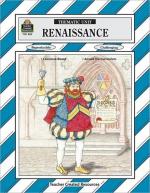|
This section contains 237 words (approx. 1 page at 300 words per page) |

|
During the initial voyage of Christopher Columbus to the New World in 1492, his ships encountered a strange expanse of water in the central North Atlantic west of the Azores. This large tract of comparatively still but clear water was oval in shape and filled with seaweed. Columbus took the presence of the weed as a sign that land was near, although his sailors had misplaced fears that their ships would become ensnared in the tangle, of floating vegetation.
What Columbus did not know at the time was that he was still hundreds of miles from land. The area of water he encountered has been dubbed the Sargasso Sea by mariners and scientists. (Free-floating brown seaweed is from the genus Sargassum.) The Sargasso Sea covers approximately 2 million square miles (two-thirds the size of the, contiguous United States) and because of clockwise-flowing currents it can be...
|
This section contains 237 words (approx. 1 page at 300 words per page) |

|




